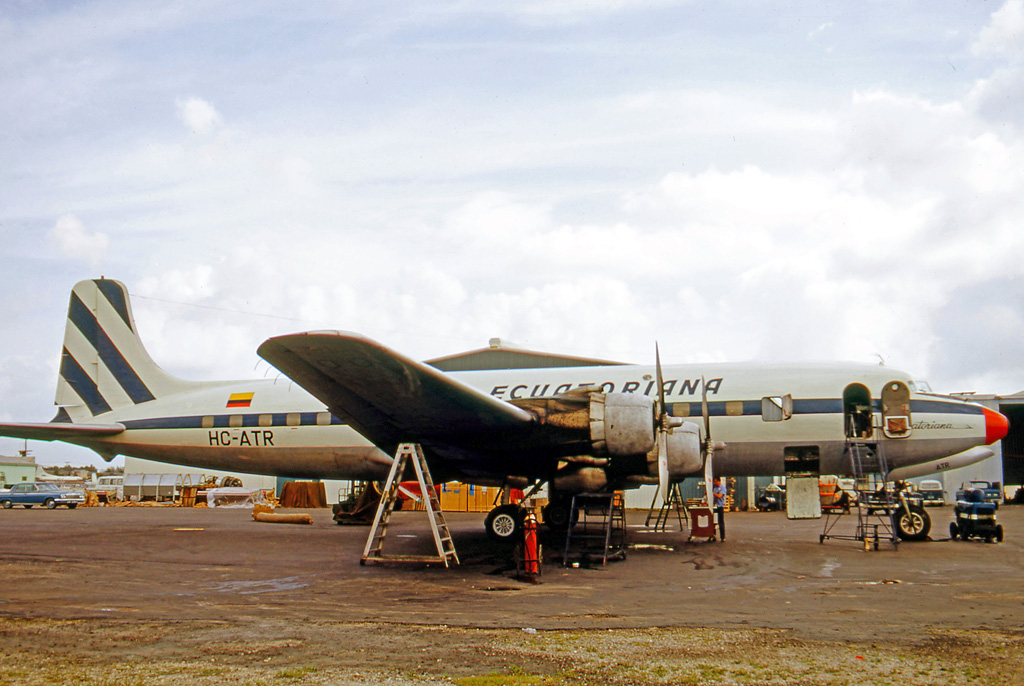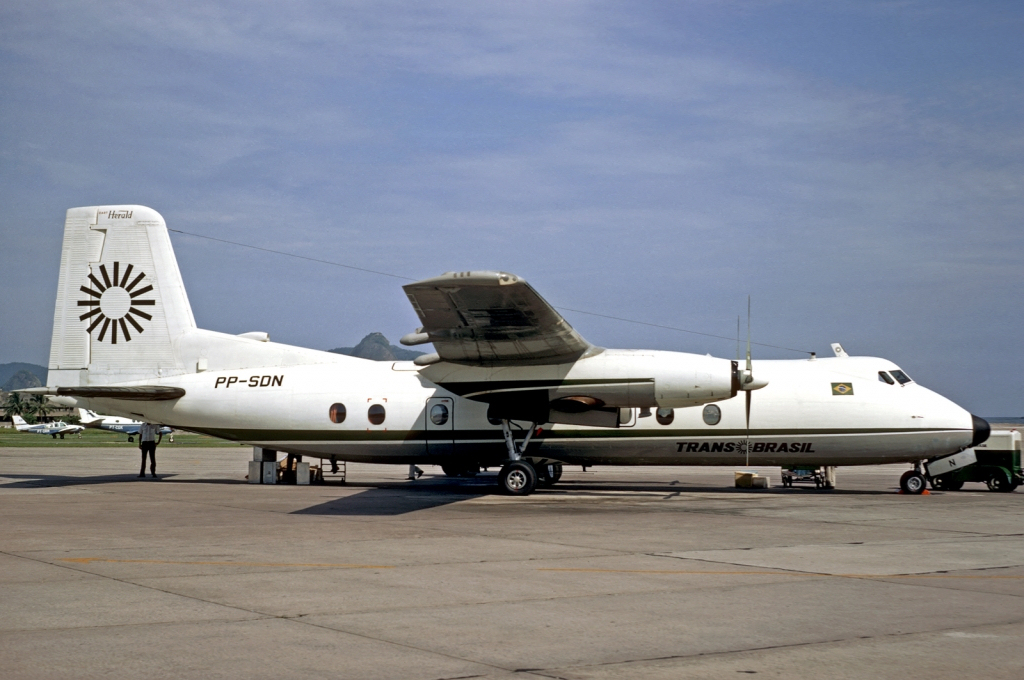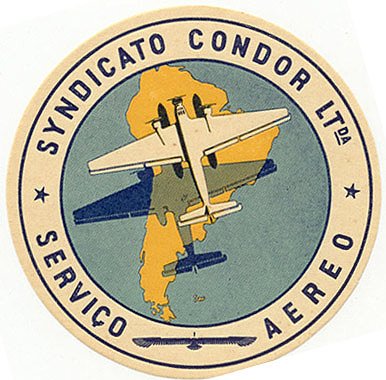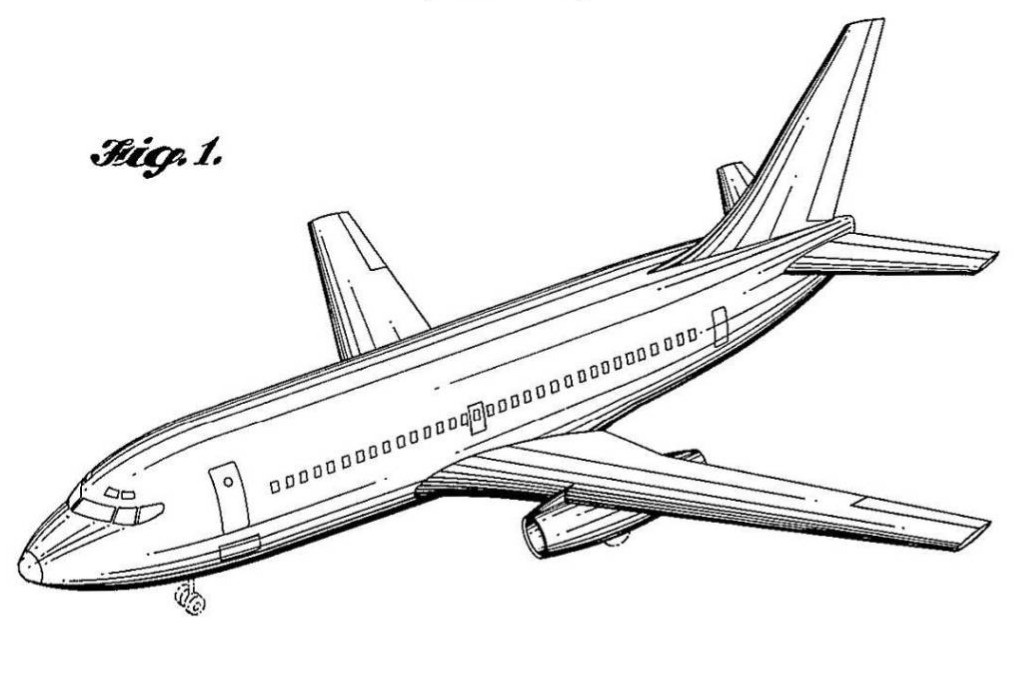|
VASP
Viação Aérea São Paulo S/A (São Paulo Airways), better known as VASP, was an airline with its head office in the VASP Building on the grounds of São Paulo–Congonhas Airport in São Paulo, Brazil. It had main bases at São Paulo's two major airports, São Paulo–Congonhas Airport (CGH) and São Paulo/Guarulhos International Airport (GRU). History The airline was established on 4 November 1933 by the state government of São Paulo and started operations on 12 November 1933. VASP was the first airline to serve the interior of the state of São Paulo (São Paulo-São Carlos-São José do Rio Preto and São Paulo-Ribeirão Preto-Uberaba), with two Monospar ST-4. At the start of the 1930s, it was the only carrier to operate with land planes in their service area. At the time this was a real exploit due to the lack of adequate non-coastal airports. Many landing strips were improvised in flat pastures. This insistence on using only land planes led to the building in 1936 ... [...More Info...] [...Related Items...] OR: [Wikipedia] [Google] [Baidu] |
Saab 90 Scandia
The Saab 90 Scandia was a civil passenger aeroplane, manufactured by Svenska Aeroplan Aktiebolaget (SAAB), in Linköping, Sweden. In 1944, as it became clear that hostilities in Europe (the Second World War) would soon end, SAAB realised that the company had to diversify from purely military endeavours if it were to survive. The board therefore decided to manufacture a twin-engined, short- to medium-haul passenger aircraft, as a successor for the Douglas DC-3. (This diversification also led to automobile production, with the Ursaab and subsequent Saab 92 passenger vehicles.) The design of the 90 Scandia was quite similar to the DC-3. The most distinct visible difference was that the 90 had tricycle landing gear while the DC-3 had a tailwheel. The Scandia also had a quite different vertical stabilizer shape, and numerous more subtle differences. The 90 had to compete with the many surplus DC-3s available on the market at the same time, making sales difficult. Design and developm ... [...More Info...] [...Related Items...] OR: [Wikipedia] [Google] [Baidu] |
Santos Dumont Airport
The Santos Dumont Airport is the second major airport serving Rio de Janeiro, Brazil. It is named after the Brazilian aviation pioneer Alberto Santos-Dumont, Alberto Santos Dumont (1873–1932). It is operated by Infraero. History Originally known as Calabouço Airport, the history of the airport can be traced back to the early 1930s. Until that time, the few aircraft equipped with landing gear used the Manguinhos Airport. Seaplanes, which at the time operated the majority of domestic and international flights, used a terminal located at the Calabouço Point, an area known today as the Praça Marechal Âncora. Take-off and landings were made using an area of the Guanabara Bay then known as ''estirão do Caju'' (''Caju water stretch''). It was as a development of the terminal at the Calabouço Point that the Calabouço Airport was created. In 1934, in order to handle a growing number of land operations, land was reclaimed from the sea to create the first runway of the ... [...More Info...] [...Related Items...] OR: [Wikipedia] [Google] [Baidu] |
São Paulo–Congonhas Airport
São Paulo/Congonhas–Deputado Freitas Nobre Airport is one of the four commercial airports serving São Paulo, Brazil. The airport is named after the neighborhood where it is located, called Vila Congonhas, property of the descendants of Lucas Antônio Monteiro de Barros (1767–1851), Viscount of Congonhas, Congonhas do Campo, first president of the province of São Paulo after the independence of Brazil in 1822, during the Empire of Brazil, Empire. In turn, the Viscount's domain was named after the plural of a shrub known in Brazil as ''congonha-do-campo'' (''Luxemburgia polyandra'', of the Ochnaceae family). Since June 19, 2017, it is officially named after Deputy José Freitas Nobre. The name Congonhas, however, remains mostly used. It is owned by the City of São Paulo. The airport is operated by ENAIRE, AENA. Congonhas has Landing slot, slot restrictions operating with a maximum of 30 operations/hour, being one of the five airports with such restrictions in Brazil. In 2 ... [...More Info...] [...Related Items...] OR: [Wikipedia] [Google] [Baidu] |
Ecuatoriana De Aviación
Empresa Ecuatoriana de Aviación, more commonly known as simply Ecuatoriana, was the national airline of Ecuador. The carrier had an operational hiatus between September 1993 and August 1995, resuming operations on 23 June 1996, after VASP became the controlling shareholder. The airline folded permanently in 2006. History Compañía Ecuatoriana de Aviación ''Compañia Ecuatoriana de Aviación (CEA)'' () was established in May 1957, after a group of American and Ecuadorian investors decided to set up an airline. At first, 50 percent of the airline was owned by Americans. Operations started in August 1957. Serving a relatively small country, the airline had a varied fleet that consisted of Curtiss C-46, Douglas DC-4, Douglas DC-6 and one Junkers K 16 aircraft. The Junkers airplane was a rarity, as Junkers airliners were already considered to be classics at the time. Ecuatoriana began serving both domestic and international destinations immediately after it started flying. ... [...More Info...] [...Related Items...] OR: [Wikipedia] [Google] [Baidu] |
Lloyd Aéreo Boliviano
Lloyd Aéreo Boliviano (LAB), internationally known as LAB Bolivian Airlines, was the flag carrier and principal airline of Bolivia from 1925 until it ceased operations in 2010. It was the second oldest airline in South America after Avianca, and among the List of airlines by foundation date, oldest airlines in the world. It operated scheduled domestic and international services to destinations in Americas, the Americas together with a Transatlantic flight, transatlantic route to Madrid in Spain. It was headquartered in Cochabamba, having its main domestic Airline hub, hub at the city's Jorge Wilstermann International Airport, and international hubs at Viru Viru International Airport in Santa Cruz de la Sierra, Santa Cruz and El Alto International Airport in La Paz. The airline was founded on 15 September 1925 by a consortium of German-Bolivian residents and began commercial flights on 24 September between Cochabamba and Santa Cruz using a Junkers F 13. History Origins Lloyd ... [...More Info...] [...Related Items...] OR: [Wikipedia] [Google] [Baidu] |
Varig
VARIG (''Viação Aérea Rio-Grandense'', 'Rio Grandean Airways') was the first airline founded in Brazil, in 1927. From 1965 until 1990, it was Brazil's leading airline and virtually its only international one. In 2005, Varig went into judicial restructuring, and in 2006 it was split into two companies: Flex Linhas Aéreas, informally known as "old" Varig, heir to the original airline, now defunct; and "new" Varig, a new company, fully integrated into Gol Linhas Aéreas Inteligentes. History Formation and early years (1927–1943) ''Sociedade Anônima Empresa de Viação Aérea Rio-Grandense – VARIG'' was the first national airline established in Brazil. It was founded on 7 May 1927, in Porto Alegre, by Otto Ernst Meyer-Labastille, a German aviator decorated in World War I, who immigrated to Brazil in 1921 and noticed how necessary air transportation was for a large country like Brazil. Varig was an off-spring of the German trade company and airline Condor Syndikat, thus ... [...More Info...] [...Related Items...] OR: [Wikipedia] [Google] [Baidu] |
Sadia Transportes Aéreos
TransBrasil was a Brazilian airline which ceased operations on 3 December 2001. During most of its history, Transbrasil was owned by local entrepreneur Omar Fontana. Its aircraft usually featured a colorful livery, remarkably with a rainbow on the tail fin. Transbrasil's base was President Juscelino Kubitschek International Airport in Brasília. From the 1970s and until its demise in 2002, Transbrasil was usually the third largest Brazilian airline after Varig and VASP, serving both domestic and international routes. History First years as Sadia (1955–1972) Transbrasil was born in the State of Santa Catarina as a sister company of S/A Indústria e Comércio Concórdia, better known by its acronym Sadia. In 1953 Omar Fontana, a pilot and one of the sons of the founder of Sadia Attilio Fontana, noticed that a Douglas DC-3 remained parked at Joaçaba Airport, near Concórdia, for the entire weekend. Omar Fontana came up with the idea of leasing the aircraft for transporting t ... [...More Info...] [...Related Items...] OR: [Wikipedia] [Google] [Baidu] |
Lóide Aéreo Nacional
Lóide Aéreo Nacional S/A was a Brazilian airline founded in 1947 as Transporte Carga Aérea (TCA). It was renamed Lóide Aéreo Nacional in 1949, after it merged with Linhas Aéreas Paulistas (LAP) and Transportes Aéreos Bandeirantes (TABA). It operated until 1962 when it was incorporated into VASP. History On December 22, 1947, Ruy Vacani founded the airline TCA – Transportes Carga Aérea S.A. in Anápolis, State of Goiás, Brazil, an airline specialized in transportation of cargo. Previously, in 1928, Vacani had also founded ETA - Empresa de Transporte Aéreo an airline that lasted for only for one year, being sold to NYRBA do Brasil. Vacani had good political connections with the then president Getúlio Vargas, who apparently favored his business. Shareholders of the airline also included Roberto Taves, one of the founders of Aerovias Brasil and Colonel Marcílio Jacques Gibson who in 1976 founded TABA – Transportes Aéreos da Bacia Amazônica. On August 24, 1949 ... [...More Info...] [...Related Items...] OR: [Wikipedia] [Google] [Baidu] |
São Paulo/Guarulhos International Airport
The São Paulo/Guarulhos–Governor André Franco Montoro International Airport , commonly known as São Paulo/Guarulhos International Airport, is the primary international airport serving São Paulo, located in the municipality of Guarulhos, in the state of São Paulo (state), São Paulo. It is the largest airport in Brazil, South America and one of the largest in the world. It is popularly known locally as either ''Cumbica Airport'', after the district where it is located and the Brazilian Air Force São Paulo Air Force Base, base that exists at the Guarulhos Airport, after the municipality where it is located. Since November 28, 2001, the airport has been named after Franco Montoro, André Franco Montoro (1916–1999), former Governor of São Paulo (state), São Paulo state. The airport was rebranded as GRU Airport in 2012. The airport is list of the busiest airports in Brazil, the busiest in Brazil in terms of transported passengers, aircraft operations, and cargo handled, p ... [...More Info...] [...Related Items...] OR: [Wikipedia] [Google] [Baidu] |
Serviços Aéreos Cruzeiro Do Sul
Serviços Aéreos Cruzeiro do Sul was the second oldest airline of Brazil, tracing its origins to 1927, when it was founded as Syndicato Condor, a subsidiary of Deutsche Luft Hansa. Syndicato Condor retained rights and interests of a former German trade company, Condor Syndikat, which previously operated passenger and mail services in Brazil. It was renamed Serviços Aéreos Cruzeiro do Sul in 1943. In 1975, Varig, a Brazilian airline which shared very similar origins, acquired its controlling shares. In 1993, it was finally merged into Varig. History Syndicato Condor and Serviços Aéreos Condor (1927–1943) The first phase in the history of Cruzeiro do Sul is related to the German influence and can be dated from 1927 until 1943. During this time the airline was called Syndicato Condor, then Sindicato Condor and finally Serviços Aéreos Condor. Condor was founded in Rio de Janeiro, on 1 December 1927, by the three former German directors of Condor Syndikat, including Fritz ... [...More Info...] [...Related Items...] OR: [Wikipedia] [Google] [Baidu] |
Monospar ST-4
The General Aircraft Monospar was a family of touring and utility aircraft designed and built by the British aviation company General Aircraft Ltd (GAL). Development In 1929, the Monospar Company Ltd was formed to pursue new techniques of designing cantilever wings, based on the work of Swiss engineer Helmuth J. Stieger, who headed the company. Helmuth John Stieger was born in Zurich in 1902, and educated at the Swiss Federal Polytechnic, and then at the Imperial College of Science in London. While working as a designer for William Beardmore and Company, he formed his own ideas about wing design, and evolved an improved method of building and stressing wings, for which he was later granted a British Patent in December 1927. The principle behind this Patent No. 306,220 was that the wing needed only one spar with torsion loads resisted by an efficient system of strong compression struts, with triangulated bracing in the form of thin wires. The design was revolutionary and very ... [...More Info...] [...Related Items...] OR: [Wikipedia] [Google] [Baidu] |
Boeing 737
The Boeing 737 is an American narrow-body aircraft, narrow-body aircraft produced by Boeing at its Boeing Renton Factory, Renton factory in Washington (state), Washington. Developed to supplement the Boeing 727 on short and thin routes, the twinjet retained the Boeing 707, 707 fuselage width and six abreast seating but with two underwing Pratt & Whitney JT8D low-bypass turbofan engines. Envisioned in 1964, the initial 737-100 made its first flight in April 1967 and entered service in February 1968 with Lufthansa. The lengthened 737-200 entered service in April 1968, and evolved through four generations, offering several variants for 85 to 215 passengers. The First Generation 737-100/200 variants were powered by Pratt & Whitney JT8D low-bypass turbofan engines and offered seating for 85 to 130 passengers. Launched in 1980 and introduced in 1984, the Second Generation Boeing 737 Classic, 737 Classic -300/400/500 variants were re-engine, upgraded with more fuel-efficient CFM In ... [...More Info...] [...Related Items...] OR: [Wikipedia] [Google] [Baidu] |









